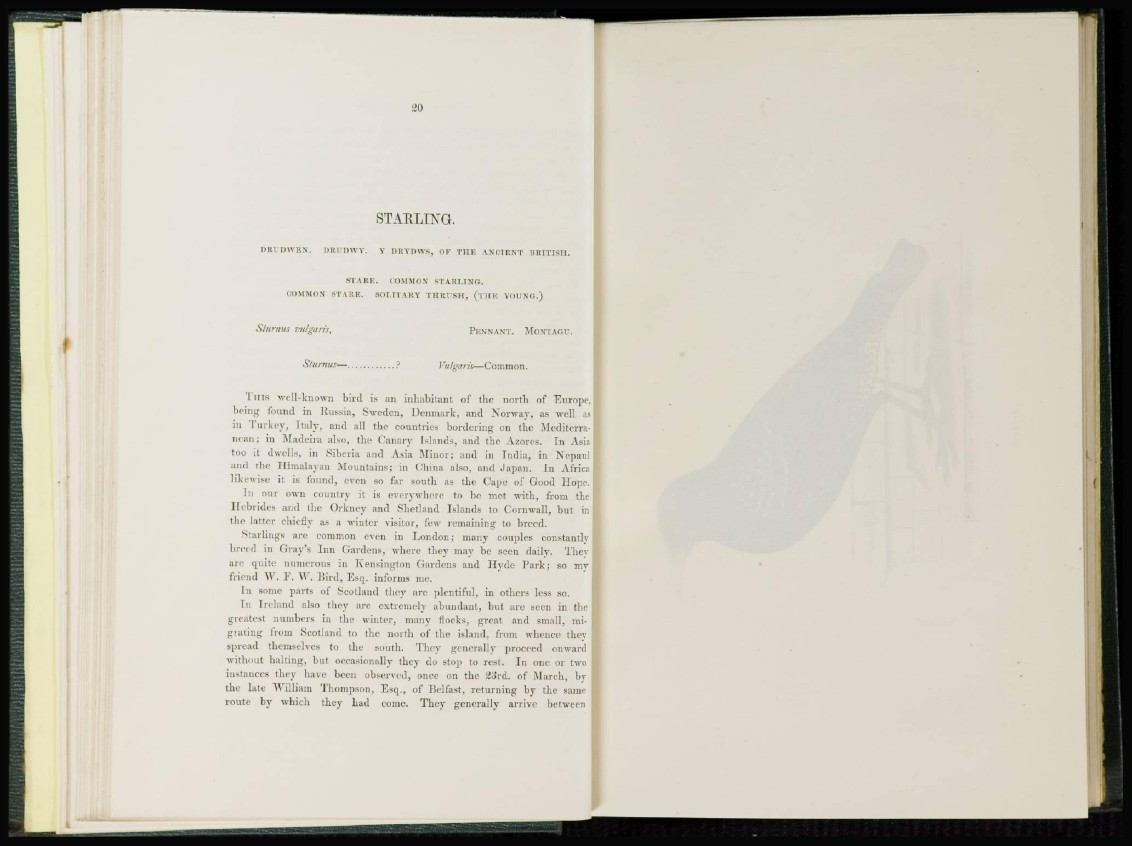
g o
S T A R L I N G .
DRUDWEN. DRT) IIWY. Y DRYDWS, OP T H E ANCIENT BRITISH.
STARE. COMMON STARLING.
COMMON STARE. SOLITARY THRUSH, ( T H E YOUNG.)
Sittmus vulgaris, PENNANT. MONTAGU.
Sturnus— ? Vulgaris—Common.
T i n s well-known bird is an inhabitant of the north of Europe,
being found in Russia, Sweden, Denmark, and Norway, as well as
in Turkey, Italy, and all t h e countries bordering on the Mediterranean;
in Madeira also, the Canary islands, and t h e Azores. In Asia
too It dwells, in Siberia and Asia Minor; and in India, in Nepaul
and the Himalayan Mountains; in China also, and J a p a n . In Africa
likewise it is found, even so far south as the Cape of Good Hopr.
In our own country it is everywhere to be met with, from the
Hebrides and the Orkney and Shetland Islands to Cornwall, but in
the latter chiefly as a winter visitor, few remaining to breed.
Starlings are common even in London; many couples constantly
breed in (Jray*s Inn Gardens, where they may be seen daily. They
are quite numerous in Kensington (rardens and H y d e Park; so my
friend W. F . W . B i r d , Esq. informs me.
In some parts of Scotland they arc plentiful, in others less so.
In Ireland also thev are extremely abundant, but are seen in the
greatest numbers in the winter, many flocks, great and small, mig
r a t i n g from Scotland to the north of the island, from whence they
spread themselves to the south. Thev generally proceed onward
without halting, but occasionally they do stop to rest. In one or two
instances they have been observed, once on the &£Jrd. of March, by
t h e late William Thompson, Esq., of Belfast, returning by the same
r o u t e by which they had come. They generally arrive between